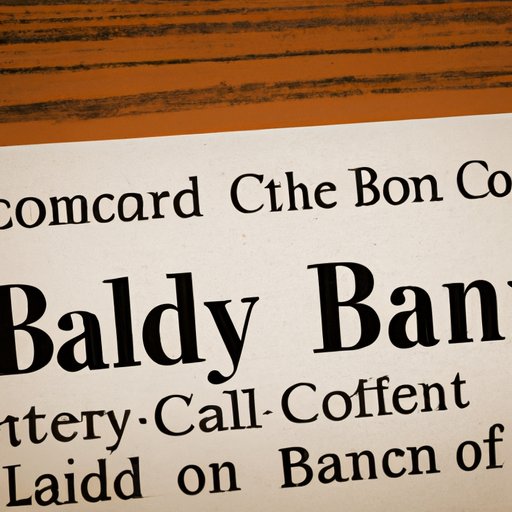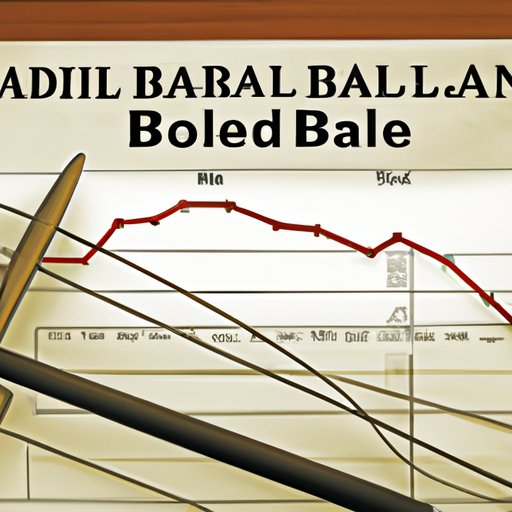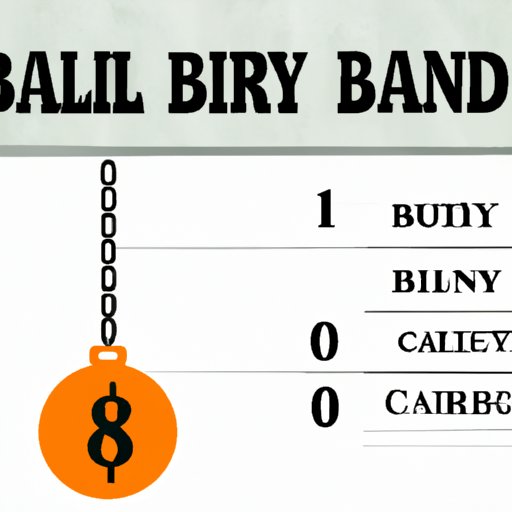Introduction
Bond bail is a form of bail that allows an accused person to be released from jail before their trial. It is often used by individuals who cannot afford to pay the full amount of their bail, or those who have been charged with more serious offenses. This article will explore the basics of bond bail, including its different types, pros and cons, costs involved, and legal implications. Additionally, it will investigate the role of a bail bondsman and examine the success rates of bond bail.

Explaining the Basics of Bond Bail: What It Is and How It Works
Bond bail is a type of bail in which a third party (known as a bail bondsman) posts money or property on behalf of the accused person in order to secure their release from jail. The accused person then agrees to appear in court when the time comes. If they fail to do so, they are liable to repay the court the full amount of the bond.
Definition
According to the American Bar Association, “bond bail is a process whereby an accused person is released from custody pending a hearing or trial, upon payment of a sum of money or other security to assure his or her appearance as required.” In other words, bond bail is a way for the accused person to be released from jail while awaiting their court date.
Types of Bond Bail
There are three main types of bond bail: cash bail, property bail, and surety bond. Cash bail is when an individual pays the full amount of their bail in cash. Property bail is when an individual provides real estate or other assets as collateral in exchange for their release. Finally, a surety bond is when a third party (such as a bail bondsman) guarantees the accused’s appearance in court by paying the full amount of the bail.
Role of a Bail Bondsman
A bail bondsman is a professional who specializes in providing bond bail services. They are responsible for posting the bond on behalf of the accused person and guaranteeing their appearance in court. In exchange for this service, the accused person must pay a fee (usually 10-15% of the total bond amount).

The Pros and Cons of Bond Bail
Bond bail can be beneficial for both the accused person and society at large, but there are also drawbacks to consider. Here are some of the pros and cons of bond bail:
Benefits
One benefit of bond bail is that it allows an accused person to be released from jail while awaiting their court date. This can help them maintain their job, care for their family, and otherwise remain productive members of society. Additionally, bond bail helps reduce overcrowding in jails, as fewer people are held in custody before their trials.
Drawbacks
One potential drawback of bond bail is that it can be expensive. The fees paid to the bail bondsman can be substantial, and the accused person may also be required to provide collateral. Additionally, if the accused person fails to appear in court, they may forfeit the money or property they posted as collateral.
Examining the Different Types of Bond Bail Available
As mentioned above, there are three main types of bond bail: cash bail, property bail, and surety bond. Each type has its own advantages and disadvantages, as outlined below.
Cash Bail
Cash bail is the simplest type of bond bail, as it requires no collateral or third-party involvement. However, it can be costly, especially for those who cannot afford to pay the full amount of their bail. Additionally, it is not available for all types of crimes.
Property Bail
Property bail is an attractive option for those who cannot afford to pay their bail in cash. It involves providing real estate or other assets as collateral in exchange for their release. However, the value of the assets must be equal to or greater than the amount of the bond.
Surety Bond
A surety bond is when a third party (such as a bail bondsman) posts the full amount of the bond on behalf of the accused person. This is a popular option for those who cannot afford to pay their bail in cash or provide sufficient collateral. However, the accused person must pay a fee to the bail bondsman for this service.
Exploring the Role of a Bail Bondsman
Bail bondsmen are responsible for posting the bond on behalf of the accused person and guaranteeing their appearance in court. Here are some of the responsibilities and requirements of a bail bondsman:
Responsibilities
The primary responsibility of a bail bondsman is to post the bond on behalf of the accused person. This involves verifying the accused person’s identity, assessing their risk level, and determining whether they can pay the bond in full. The bail bondsman must also guarantee the accused person’s appearance in court.
Requirements
In order to become a bail bondsman, an individual must meet certain requirements. These include obtaining a license from the state, obtaining insurance, and passing a background check. Additionally, a bail bondsman must have a thorough understanding of the laws and regulations related to bond bail.
Analyzing the Costs Involved in Bond Bail
When it comes to bond bail, there are several costs to consider. These include fees, collateral, and other expenses. Here is a closer look at these costs:
Fees
When an accused person opts for bond bail, they must pay a fee to the bail bondsman (usually 10-15% of the total bond amount). This fee covers the cost of posting the bond on behalf of the accused person and guaranteeing their appearance in court.
Collateral
In some cases, the accused person may be required to provide collateral in order to secure the bond. This could include real estate, vehicles, jewelry, or other assets. The value of the collateral must be equal to or greater than the amount of the bond.

Exploring the Legal Implications of Bond Bail
When it comes to bond bail, there are several legal implications to consider. Here are some of the most important ones:
State Laws
Each state has its own laws and regulations regarding bond bail. For example, some states require a minimum amount of collateral to be posted, while others prohibit certain types of collateral altogether. Additionally, the fees charged by bail bondsmen vary from state to state.
Conditions of Release
When an accused person is released on bond bail, they must adhere to certain conditions. These may include restrictions on travel, drug testing, or contact with certain individuals. Failure to comply with these conditions can result in the accused person being sent back to jail.

Investigating the Success Rates of Bond Bail
When considering bond bail, it is important to understand the success rates associated with it. Here is a closer look at the factors influencing success rate, as well as the average success rates:
Factors Influencing Success Rate
The success rate of bond bail depends on a variety of factors, such as the seriousness of the crime, the accused person’s criminal history, and the amount of the bond. Additionally, the presence of a support system and access to resources can also play a role in the success rate.
Average Success Rates
According to a study conducted by the National Institute of Justice, the average success rate of bond bail is 79%. This means that 79% of people released on bond bail are able to make all of their required court appearances.
Conclusion
In conclusion, bond bail can be a useful tool for those who cannot afford to pay the full amount of their bail or who have been charged with more serious offenses. It allows an accused person to be released from jail while awaiting their court date, and there are several types of bond bail available. Additionally, there are several costs and legal implications associated with bond bail, and the success rate of bond bail is generally high. Ultimately, bond bail can be a beneficial option for those who need it.
Summary
This article explored the basics of bond bail, including its different types, pros and cons, costs involved, and legal implications. It also investigated the role of a bail bondsman and examined the success rates of bond bail. Bond bail can be a useful tool for those who cannot afford to pay the full amount of their bail or who have been charged with more serious offenses.
Final Thoughts
It is important to understand the ins and outs of bond bail before opting for it. While it can be a beneficial option for those who need it, there are several costs and legal implications associated with it. As such, it is essential to weigh the pros and cons carefully before making a decision.
(Note: Is this article not meeting your expectations? Do you have knowledge or insights to share? Unlock new opportunities and expand your reach by joining our authors team. Click Registration to join us and share your expertise with our readers.)
